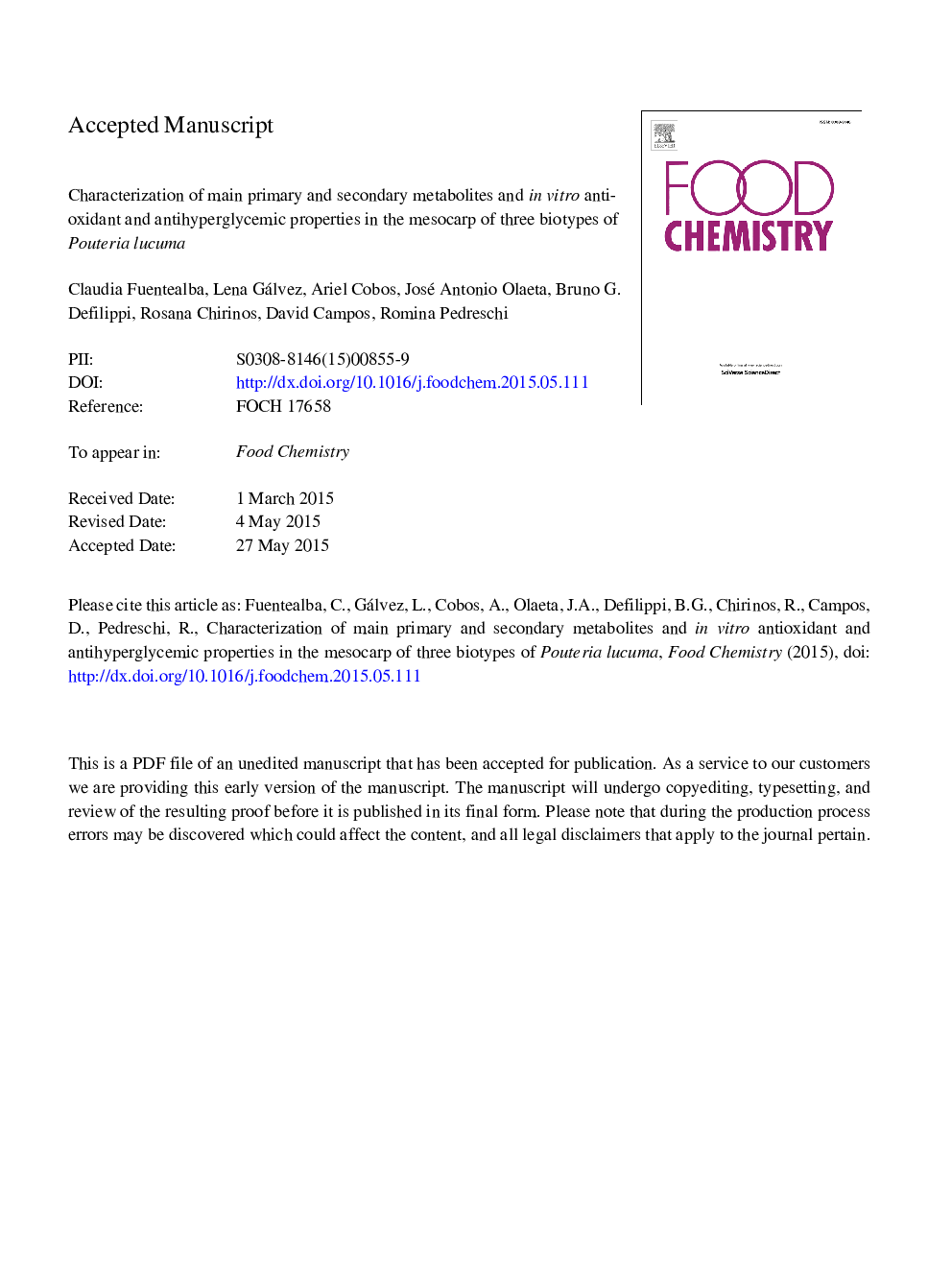| Article ID | Journal | Published Year | Pages | File Type |
|---|---|---|---|---|
| 7590633 | Food Chemistry | 2016 | 36 Pages |
Abstract
Pouteria lucuma is an Andean fruit from pre-Incas' times highly appreciated due to its characteristic flavor and taste in its homeland. We characterized the primary (e.g., sugars and organic acids), and secondary (e.g., phenolics and carotenoids) and in vitro antioxidant and antihyperglycemic properties of Rosalia, Montero and Leiva 1 lucuma biotypes. Significant differences were found in these metabolites and functional properties related to biotype and ripeness stage. Results showed significant amounts of sugars (119.4-344 mg total sugars gâ1 DW) and organic acids (44.4-30.0 mg gâ1 DW) and functional associated compounds such as ascorbic acid (0.35-1.07 mg gâ1 DW), total phenolics (0.7-61.6 mg GAE gâ1 DW) and total carotenoids (0.22-0.50 mg β-carotene gâ1 DW). Important in vitro antioxidant and antihyperglycemic properties were found and provide the base for the standardization of lucuma harvest and postharvest focused not only on the enhancement of sensory but functional properties.
Related Topics
Physical Sciences and Engineering
Chemistry
Analytical Chemistry
Authors
Claudia Fuentealba, Lena Gálvez, Ariel Cobos, José Antonio Olaeta, Bruno G. Defilippi, Rosana Chirinos, David Campos, Romina Pedreschi,
